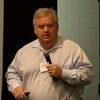Check out what is new in Pig Industry
Find the best technical articles, forums, and videos on Pig Industry at Engormix. Enter now and interact with the world's largest agricultural social network.

Stefan Eils, Director Sustainability Development at Evonik Animal Nutrition, speaks about the relevance of asustainable food chain production
...
Comments : 0
Recommendations: 5
Introduction Pigs suffer high rates of embryonic mortality, especially during the peri-implantation period of pregnancy [1, 2] when embryos elongate rapidly, signal for pregnancy recognition, and attach to the uterine wall [3, 4]. Maternal nutrition plays an important role in the development and subsequent survival of conceptuses (embryo/fetus and its extra-embryonic membranes), especially the maternal dietary intake of amino acids (AAs) [5–7]. Both low and high...
Comments : 0
Recommendations: 0


Prices Hold, Pressures Build: What’s Moving the Veterinary API Market
Suggested link
New component in the Gut Health Solutions portfolio from Evonik Animal Nutrition
Phytogenics are important components of alternative solutions to antibiotic growth promoters
Product from this partnership to be available in Europe in the first quarter of 2023
Essen, Germany. Evonik and Dr. Eckel Animal Nutrition have entered into a partnership effective January 1, 2023. This agreement will enable Evonik's Animal Nutrition business line to expand its...
Comments : 1
Recommendations: 0
...
Comments : 0
Recommendations: 0
.jpg&w=3840&q=75)

MetAMINO® Atlas: Essential Insights for Animal Nutrition Professionals
Suggested link
...
Comments : 0
Recommendations: 0
For many years reactive oxygen species (ROS) production in biological systems has been considered to be detrimental. However, a pleasant face of ROS has received recently tremendous attention. Indeed, it has been proven that ROS participate in cell signalling, transcription factors regulation and vitagene activation to maintain optimal cellular redox balance and to provide an effective stress adaptation [1]. In fact, redox biology is a very rapidly developing area of modern biological...
Comments : 1
Recommendations: 1
Introduction The infection by enterotoxigenic Escherichia coli (ETEC) is one on the most important causes of neonatal and postweaning diarrhea (PWD) in piglets. ETEC causes significant morbidity and mortality, resulting in a large economic loses in the porcine industry. One of the most common ETEC in swine is serotype 0149 which carries the K88 (F4) adhesin that enables the attachment of the bacteria to the intestinal epithelium. ETEC colonizes ileum [1,2], penetrate the...
Comments : 0
Recommendations: 0
...
Comments : 0
Recommendations: 0
...
Comments : 0
Recommendations: 0
...
Comments : 0
Recommendations: 0
...
Comments : 0
Recommendations: 0
...
Comments : 0
Recommendations: 0


Prices Hold, Pressures Build: What’s Moving the Veterinary API Market
Suggested link
.jpg&w=3840&q=75)

MetAMINO® Atlas: Essential Insights for Animal Nutrition Professionals
Suggested link
Botanicals represent a wide class of complex compounds that naturally contain active principles with numerous biological functions. Among them, the anti-inflammatory and antioxidant actions are of key interest to support intestinal health during stressful phases. The aim of this study was to investigate the ability of a thymol-based blend of botanicals (BOT) to protect intestinal Caco-2 cells from the damages induced by an inflammatory challenge in vitro. Caco-2 cells were differentiated on...
Comments : 0
Recommendations: 1
Introduction On average, piglet livability in Europe is 83%, ranging from 70% to 90%. It is determined by the number of still births and pre-weaning mortality in a given litter. With the increasing litter size, piglet survival is a persistent challenge to pig producers. This calls for a feeding and management strategy to improve nutrition and wellbeing of the sow in the transition phase covering late gestation, farrowing, lactation and breeding. The transition period...
Comments : 1
Recommendations: 0
Introduction The major goal of the swine industry is to minimize neonatal mortality and improve weaning weights of neonatal pigs because their adaptability to weaning and their rates of growth to market weight are positively affected by weaning weight [1]. The total net profit of a swine production unit is primarily determined by both the number and size of piglets produced per year per sow [2]. Recent attempts to increase litter size have led to increased prevalence of...
Comments : 0
Recommendations: 0
A new educational program, hosted by the American Feed Industry Association (AFIA), will focus on biosecurity preparedness in the animal food industry. The program, “ Biosecurity: Preparedness Must Be Perpetual ,” will take place on Jan. 25, 2023, in conjunction with the 2023 International Production & Processing Expo, taking place Jan. 24-26 in Atlanta,...
Comments : 0
Recommendations: 0















.jpg&w=3840&q=75)

.jpg&w=3840&q=75)
.jpg&w=3840&q=75)


.jpg&w=3840&q=75)


.jpg&w=3840&q=75)



